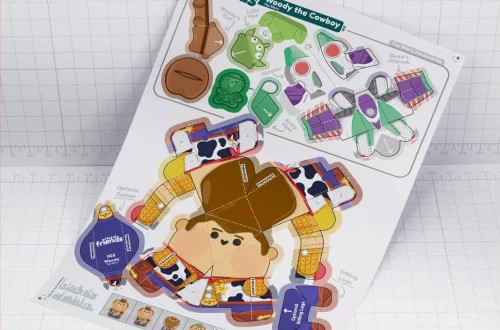Part 1: The Foundation of Game Design
1. Define Your Game’s Core Mechanics
The heart of any board game lies in its core mechanics. These are the fundamental rules and interactions that define how the game is played. Consider what makes your game unique. Is it a strategic battle of wits, a cooperative puzzle, or a thrilling race against time? Clearly defining your core mechanics will guide the rest of your board game design.
2. Identify Your Target Audience
Understanding your target audience is crucial for successful game design. Are you creating a game for families looking for fun bonding experiences, hardcore gamers seeking strategic challenges, or a specific niche, such as fans of historical adventures? Knowing your players informs your decisions regarding complexity, theme, and overall experience.
Consider factors such as age, skill level, and interests. For instance, games designed for younger players may need simpler mechanics and vibrant visuals, while those aimed at experienced gamers can incorporate intricate strategies and nuanced themes. Additionally, understanding lifestyle preferences—like whether your audience enjoys cooperative games or competitive formats—can guide your design choices.
Conducting surveys or focus groups can also yield valuable insights into player expectations. Ultimately, a deep understanding of your target audience allows you to create a game that resonates, ensuring that it meets their desires and enhances their enjoyment, resulting in a more successful and engaging product overall.

Part 2: Crafting Engaging Gameplay
1. Balance and Pacing
A well-balanced game keeps players engaged from start to finish.
Ensure that the game’s difficulty scales appropriately, and that there are opportunities for both experienced and new players to shine. Pacing is equally important. The game should flow smoothly, with enough tension and excitement to keep players invested.
2. Create a Rich Theme
A strong theme is essential in immersing players into the game world, transforming their experience from mere gameplay to an engaging adventure. When choosing a theme, consider how it resonates with your target audience and how it can enhance the overall appeal of the game. A well-defined theme not only sets the mood but also informs the mechanics, components, and artwork, creating a cohesive experience.
For instance, if your game revolves around a fantasy realm, incorporate elements that reflect that world, such as mythical creatures, magical spells, or epic quests. This can influence gameplay mechanics, like using dice rolls to cast spells or cards that represent different characters and their abilities. The components should mirror the theme as well; for instance, wooden pieces shaped like ancient artifacts or tactical boards illustrated with vibrant landscapes elevate authenticity.
Art plays a vital role in conveying the theme and should evoke the intended emotions and atmosphere. Working with a skilled illustrator can bring your world to life, enhancing player immersion and attracting attention. When all these elements—mechanics, components, and artwork—are harmoniously integrated, a well-executed theme can elevate a good game into a truly memorable one, fostering a lasting connection between players and the game itself. This connection not only encourages repeat play but also prompts players to share their experiences with others, creating an organic buzz and expanding your game‘s reach in the gaming community.
Part 3: The Art of Iteration
1. Playtesting is Essential
No game is perfect on the first try, and recognizing this is a crucial step in the design process. Playtesting is an essential part of refining your game, allowing you to gather valuable insights from a diverse group of players. Engaging a variety of testers—friends, family, and even strangers—can provide a broad spectrum of perspectives. Each player brings their unique preferences and experiences, helping to identify potential flaws, imbalances, and areas needing improvement that you might have overlooked.
During playtesting sessions, pay attention not just to the feedback given, but also to the players’ reactions and behaviors while engaged in the game. Are they fully immersed, or do they seem confused or disengaged at certain points? Observing interactions can reveal underlying issues with game mechanics or pacing. Encourage open dialogue during debriefing sessions after gameplay, asking specific questions about what elements they enjoyed or found frustrating.

Once you’ve gathered feedback, it’s time to evaluate and make necessary adjustments. This iterative process is vital—make changes, then test again to see how those adjustments affect gameplay. You may find that solutions for one issue inadvertently create new problems elsewhere. Therefore, multiple rounds of playtesting are often necessary to create a balanced experience that resonates with players.
Don’t hesitate to embrace and learn from constructive criticism; it is a key ingredient in transforming your game from a rough prototype into a polished gem. Each cycle of testing, feedback, and adjustment brings you closer to that ideal gameplay experience. Eventually, when you find balance and satisfaction after multiple iterations, you will have crafted a game that not only aligns with your vision but also resonates with players, making for an enjoyable and memorable experience. This thorough vetting process not only enhances your game’s quality but also boosts your confidence as a designer, knowing that your creation has been refined through real-world play.
2. Learn from Existing Games
Studying successful board games can provide valuable insights into game design principles. Analyze their strengths and weaknesses, and consider how you can incorporate those lessons into your own game. Remember, inspiration is not imitation; use existing games as a starting point for your own creative ideas.
Part 4: Bringing Your Game to Life
1. Component Design
The physical components of a board game play a significant role in shaping the overall experience for players. From the board itself to the pieces, cards, and tokens, each element contributes to the immersion and enjoyment of the game. Quality matters; using durable materials ensures the game can withstand repeated play, creating a lasting impression. Aesthetics also come into play—visually appealing components can capture players’ attention and enhance their excitement. Consider the design elements, such as artwork and color schemes; these can set the tone and theme of your game. Additionally, functionality should not be overlooked; pieces should be easy to handle, cards easy to shuffle, and boards easy to set up. High-quality components not only improve gameplay but also elevate the perceived value of your game, making it more attractive to potential players. Ultimately, investing in thoughtful and well-crafted physical components can significantly enhance the overall gaming experience.

2. Marketing and Promotion
Once your game is complete, it’s time to share it with the world, and this is where a well-thought-out marketing strategy comes into play. Developing a strong marketing approach is essential to generate interest and build anticipation among potential players. Start by identifying your target audience—understanding their preferences and interests will help you tailor your messaging.
Utilizing social media is crucial; platforms like Instagram, Twitter, and Facebook can be powerful tools for showcasing your game’s unique features. Create engaging content, such as behind-the-scenes looks at the design process, sneak peeks of gameplay, and testimonials from playtesters. Online platforms like Kickstarter or IndieGoGo can also serve as excellent launchpads, allowing you to connect directly with early adopters and gather valuable feedback.
Gaming conventions are another fantastic avenue for promotion. Attending these events allows you to demo your game, interact with potential players, and network with other industry professionals. Effective promotion in today’s crowded market requires creativity and persistence, but a strategic approach will help your game stand out and capture the attention it deserves. By establishing a strong presence both online and offline, you’ll foster excitement and build a community around your game, ultimately increasing its chances of success.
Remember, board game design is a creative and iterative process. Be prepared to experiment, fail, and learn along the way. By following these guidelines and continuously refining your skills, you can create board games that captivate and delight players of all ages and skill levels.




